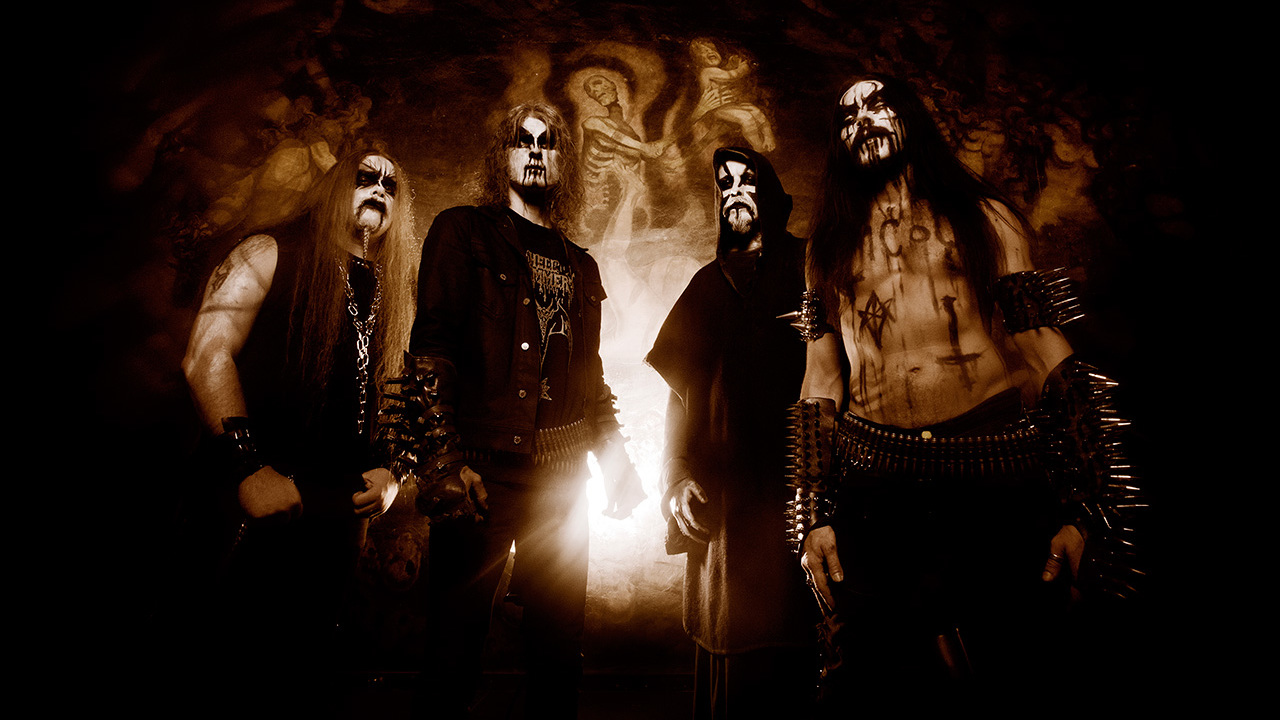Taking their name from the year in which the Black Death hit Norway, 1349 are one of the most successful bands active in the movement today and embody many of the characteristics fundamental to traditional Norwegian black metal, despite actually appearing on the scene at quite a late stage. Indeed, the timing of their arrival would prove significant, satisfying a growing desire within the black metal community – not least among the members of 1349 itself – to see the genre return to the darkness and brutality that had defined it a decade earlier. The merciless and restless aggression of the 2003 debut album Liberation would thus act as not only a highly effective statement of intent, but a clear reaction against the increasingly accessible music coming out of Norway. This was, after all, an era when larger-than-life albums such as Satyricon’s Volcano (2002) and Dimmu Borgir’s Death Cult Armageddon (2003) were being released to wide acclaim within the more mainstream metal scene, expanding black metal’s audience dramatically in the process.
Here, in the face of such unsettling cultural shifts, was a group whose every attribute seemed embedded in what had now become the ‘old school’ of second wave black metal. Not only were the band members captured in lo-fi photos sporting an unambiguously stark combination of corpsepaint, spikes and inverted crosses, but the music created by the Oslo horde offered a similar lack of concessions to modern trends. Furthermore, it was captured with a ludicrously extreme production so raw and compressed that it was all but impenetrable to the casual listener – truly this was music designed for the dedicated. Yet despite that, the band quickly received solid press coverage and fan interest, a result of many things, not least the album’s release on Candlelight Records – then one of the more visible labels dealing with the scene – and the unexpected presence of Frost from the aforementioned Satyricon on the drums. As a result, many picked up on this distinctly violent and uncommercial outfit at an earlier stage than they might otherwise have done.
Ravn (vocals): “It started with metal or hard rock – I’m born in the 70s, so that’s the music I grew up with. Artists like Jimi Hendrix and Deep Purple got me into drumming because of the way Ian Paice and Mitch Mitchell played the drums – it was more than just a rhythm, they were playing instruments and I really liked a rhythm instrument to be more of a musical instrument. I don’t know why but it was always the harder, more aggressive music I liked, the songs that had more edge to them. When I discovered a new artist that was more aggressive and brutal, it was just a spiral that went down. Black Sabbath had a particularly dark edge to it – I did not realise it was the darkness and grimness in the music [I liked] but if the music had a feeling of sadness or darkness in any way it was more appealing to me. When I listened to Slayer for the first time it was like, ‘This is perfect; it’s fast, it’s brutal, aggressive’, and it suited me very well. Thrash metal was a genre I liked a lot. Then in the very beginning of the 90s, I heard Burzum for the first time and it awoke a new feeling, a feeling of coming home in a way.”
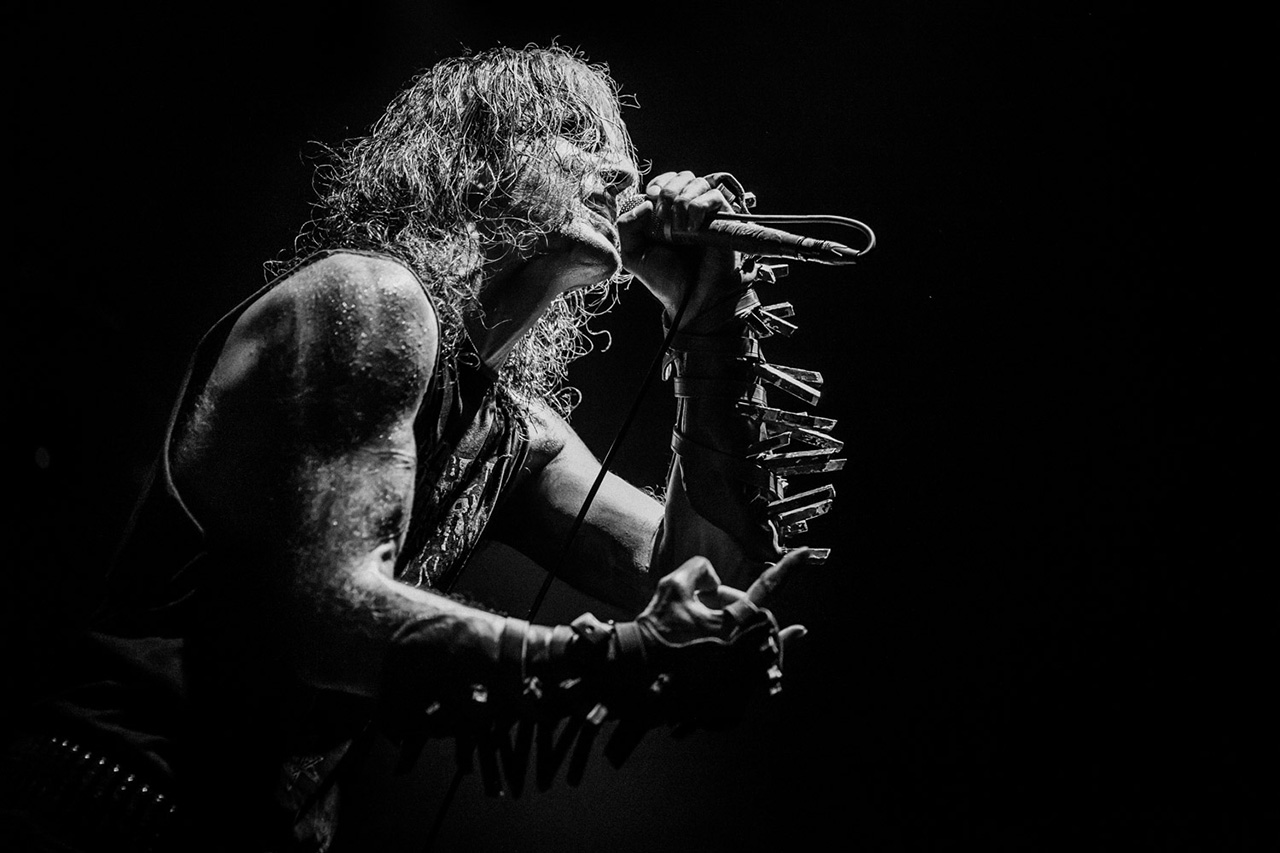
“Since I was playing drums myself and had visions for music and was making music, I had these ideas for really dark, sinister and grotesque music in a way, a kind of weird combination. I was trying to wrap my mind around it in order to be able to explain it in a good enough way to the people that I was playing together with, and then I heard Burzum and it was like, ‘This is it, this is the formula, this is what I have been looking for’. That gave me a relief in a way, like, ‘This music exists’ and I didn’t feel the need to make it myself because the music that was there was so good. That feeling became my reference point for black metal; black metal for me is the feeling I get when I heard Burzum for the first time, that’s my starting point. And I didn’t feel the need to perform black metal until the later half of the 90s when Euronymous was dead. Black metal had lost, in my eyes, all its grimness and aggression and turned into more of a pompous synth circus. Of course, black metal as a genre was huge and was kind of a new thing and that of course was a good thing but I felt that it had lost a very, very vital part of what the black metal feeling was to me. As a musician, instead of complaining about it and just saying, ‘Black metal is lost and dead’, I decided to rather do something about it myself since I was, and still am, so passionate about the art form of black metal. And that’s where I started 1349.”
You lived in Oslo during the 90s, to what degree were you involved with the emerging black metal scene there as a youth?
“We were going to all the shows that were in Oslo, hanging out in Elm Street and being part of that scene in a way. We were also partying, it was kind of a big group of friends but there was also a great respect for the musicians and the craftsmanship being displayed as well.”
Did you ever visit Euronymous’ Helvete store?
“No, I wasn’t in Oslo in that point of time. I moved to Oslo in the mid-90s – before that I lived in a small mountain town about two and a half hour’s drive towards Bergen from Oslo.”
Did you spend much time in Bergen before your move to the capital?
“No, I didn’t have a connection to the Bergen scene until later years. But when there were shows in Oslo there came people from Bergen, Stavanger, Trondheim and so on because there wasn’t that many shows and people wanted to support it.”
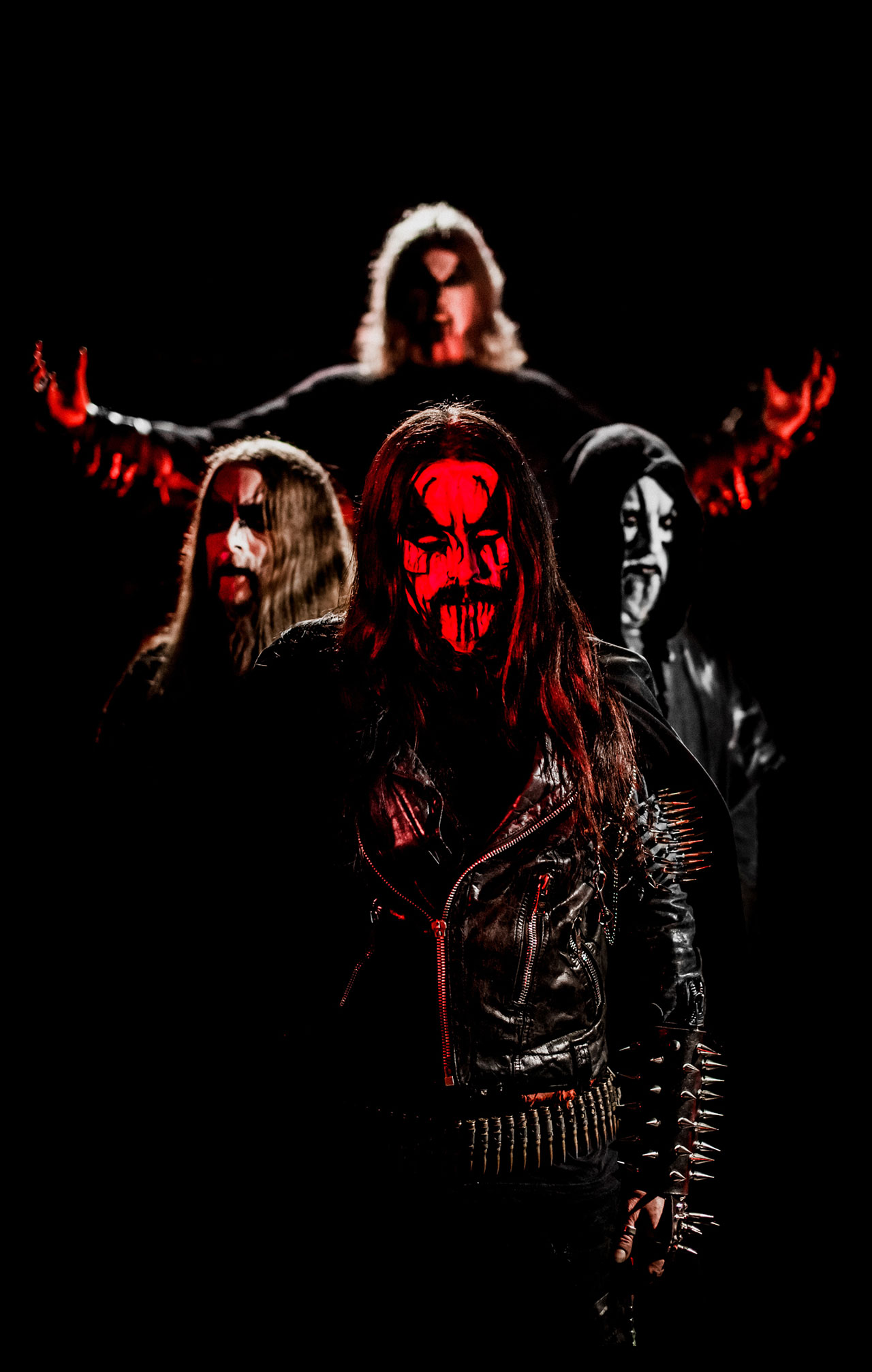
You said that you formed 1349 because you felt that black metal had begun to lose its way by the late 90s – can you tell me more about that?
“It lost a very vital part of it, which was the grimness in the music, the relentless grimness that is giving you this weird combination of chilling feeling and at the same time is euphoric. The music makes the hairs stand up on your body but at the same time you are feeling this euphoric feeling, that ‘ravishing grimness’ that Darkthrone described so perfectly. That is the basic essence of true Norwegian black metal music.”
You already mentioned Burzum, were there any other significant bands that acted as a point of reference for what you were trying to do?
“The ambition for 1349 was, and is still, to honour the heritage and legacy of the black metal that came out in the beginning of the Norwegian wave of black metal. The reason for 1349 was to be fast, to be brutal, to be extreme, to be grim and also to top all those things; to be the grimmest, the darkest, and also keep the speed and aggression in there as well. The reference point was that groove: If you look at the different black metal bands, some of them have more of a punk groove, some have more of a rock ’n’ roll groove, and for us it should be more of a thrashy groove.”
Was Gorgoroth an influence in those early days?
“Yes it’s in the disharmonic area of things. Early Gorgoroth… I like the chill within it, Infernus writes in a peculiar way and it has a signature to it, you can immediately tell what Infernus has written in the Gorgoroth catalogue and what he hasn’t. But I think it’s a very misunderstood thing; bands say they are influenced by this and that black metal band, but a lot of times when you listen, to me it feels like they have been not been influenced, but are trying to copy. If you are being inspired by a band then you should not try and copy it, you should see what they have done and do it your way. That has always been a focal point for 1349.”
“We really wanted to make our own identity and have a unique sound, just like all the other known Norwegian black metal bands; Gorgoroth sounds like one thing, Burzum sounds like one thing, Mayhem, Immortal, Enslaved, Thorns, Emperor, they all had their own unique sound. It was very important to make that happen in 1349 and Liberation was the first time we were able to accomplish that. That’s also why it took so many years to refine things, so that we were able to find our own identity as a band, as a Norwegian black metal band. Liberation was the starting point and since then we have gone our own way.”
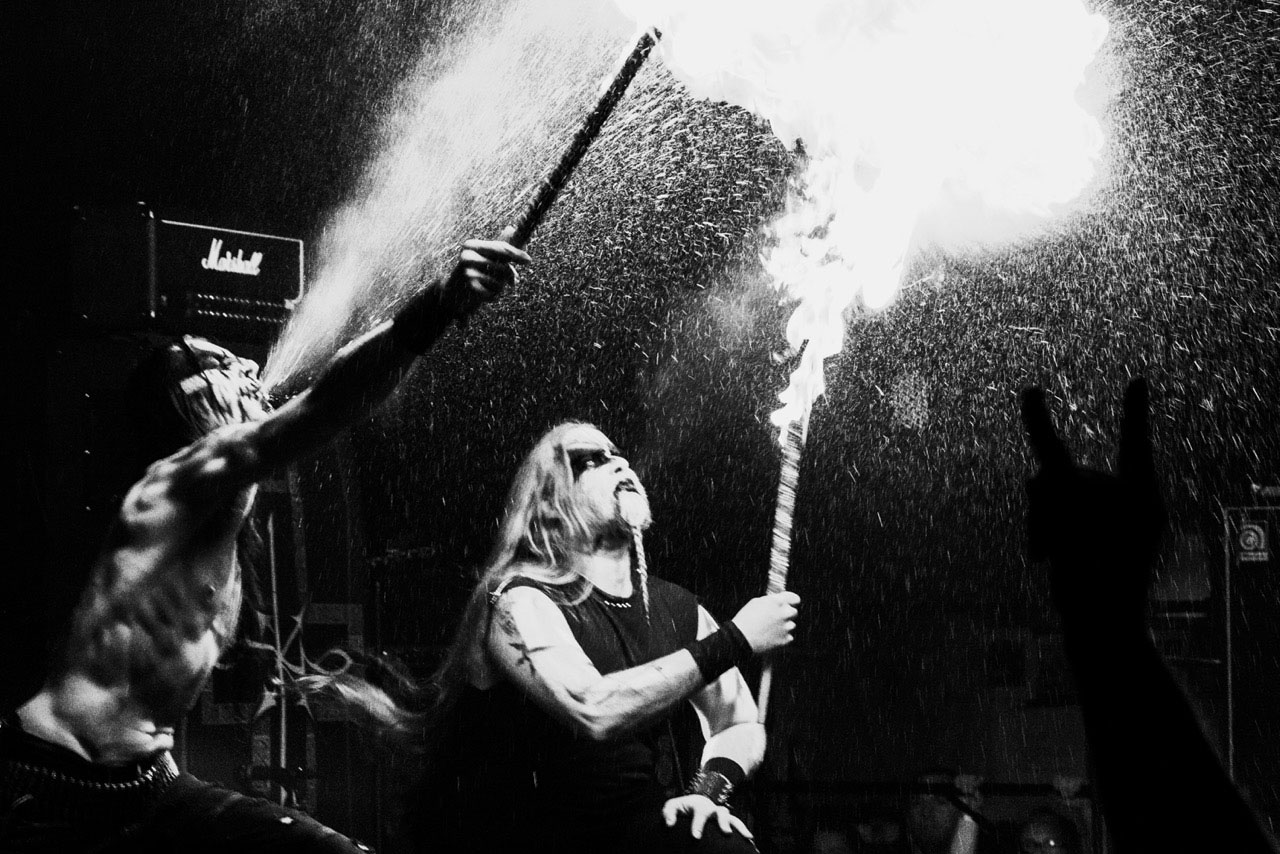
Were the releases that preceded the debut album not as you hoped they would be then? The two demos and the 2001 self-titled EP?
“They were all demos actually. We had three demos; the first one [1998] wasn’t sent out to anyone, Chaos Preferred [1999] was made in 49 copies and sent out to labels and that’s where it spread out, it was never officially released. The EP was also a demo that we sent to Holycaust Records, because at that point in time he had signed Nocturnal Breed and me and the vocalist/bass player of Nocturnal Breed [Destroyer, also known as Svartalv during his time with Gehenna/Satyricon] have a strong relationship which goes back, so at that point he referred us and said, ‘You should check out this band’. So I sent that EP, which at that point was a demo, and he said, ‘This is really good, I want to release it’. At that point in time, after not getting any serious offers on the [previous] demo, we were just happy that that this small American label wanted to release it – it was like, ‘Okay, let’s release it and see what happens’. In retrospect, maybe we shouldn’t have done that, but it led to the deal with Candlelight and Liberation and kind of started everything. So I don’t know what would have happened if it hadn’t been for that but I think the Liberation material was so good that we would have found a record deal regardless. But if it was with Candlelight, you never know.”
We’ve talked about the roots of Norwegian black metal, but where do you personally feel black metal as a whole began? Do you think it began in Norway or do you see bands like Bathory and Masters Hammer as being part of the canon as well?
“The name started with Venom of course, and it’s no question that it started way before the Norwegian wave came along – you mention Bathory and that is extremely black metal-sounding and gives me that black metal feeling – Hellhammer as well. I think you write in the beginning of your [first] book that it most likely is Black Sabbath that is the main kick-starter to this whole scene, and as a writer you mention that there are these other bands that touch these elements at an earlier stage, bands like Coven. I think it is Toni Iommi who does the transition; taking things out of the blues scale and making that basic essence for thrash metal that comes from that. I really like that, that he finds out; ‘This sounds more evil to do it this way’ and then bands come along like Slayer and that’s how they make their music, it’s perfect.”
“So something had been lurking there all along and it’s during the beginning of the 80s that the name ‘black metal’ shows up and the blueprint for the genre starts, but it is with the Norwegian black metal scene that it is getting shot into space basically and evolves into a genre of its own. From there on it becomes two terms; ‘black metal’ and ‘Norwegian black metal’, because the impact of Norway was without a shadow of a doubt so huge, it became basically a genre of its own.”
Black Metal: Into The Abyss is available order here. 1349 are currently set to tour the US later this year and will be touring Europe with Abbath and Vltimas in 2020.
The band's new record The Infernal Pathway is out October 18 and available to pre-order here.
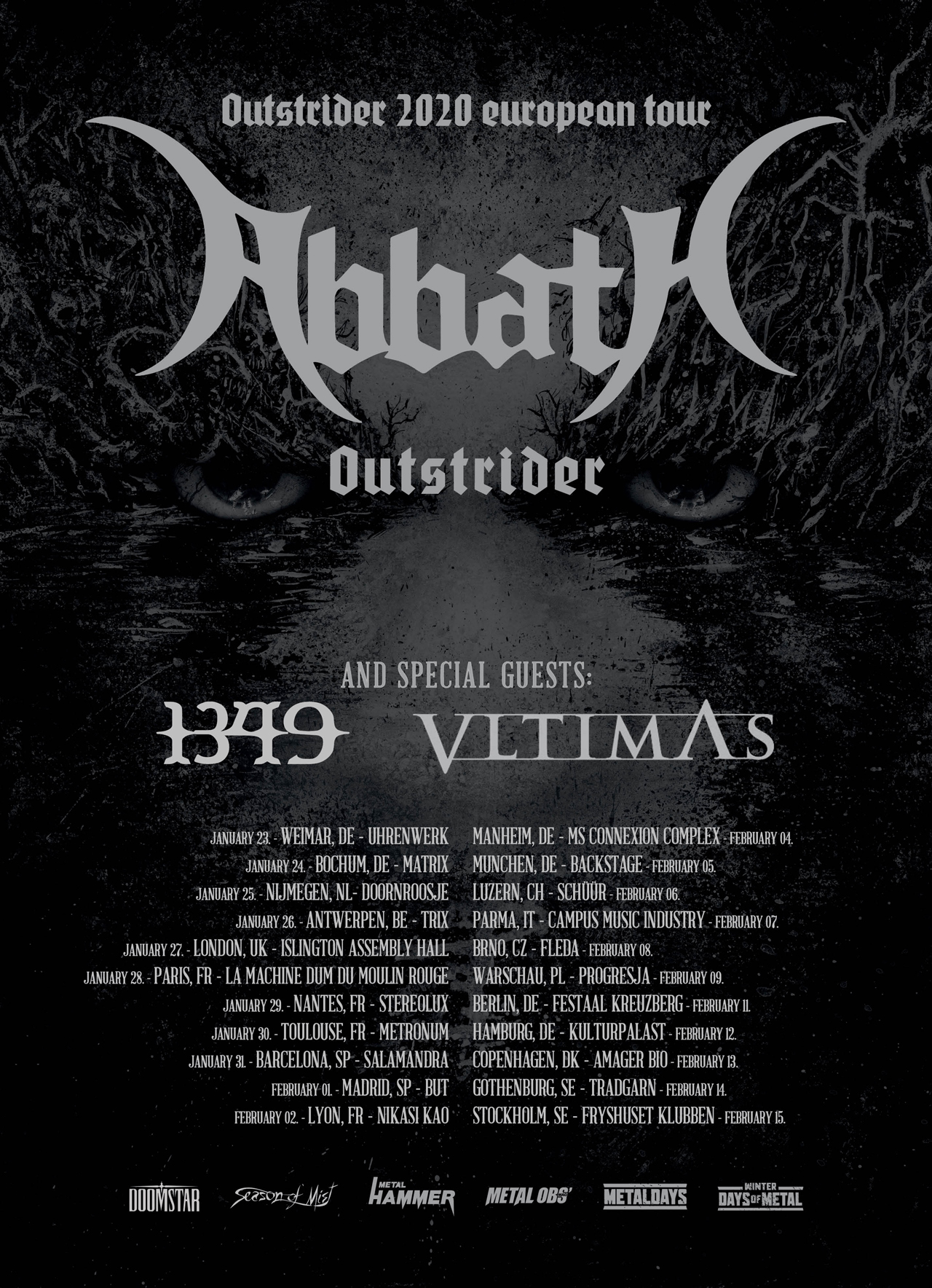
1349 tour dates 2019
Aug 04: Rasnov Rockstadt Extreme Fest RO
Nov 30: Parma Black Winter Fest XII IT
1349 European tour dates 2020 w/ ABBATH and VLTIMAS
Jan 23: Weimar Uhrenwerk DE
Jan 24: Bochum Matrix DE
Jan 25: Nijmegen Doornroosje NL
Jan 26: Antwerpen Trix BE
Jan 27: London Islington Assembly Hall UK
Jan 28: Paris La Machine Du Moulin Rouge FR
Jan 29: Nantes Stereolux FR
Jan 30: Toulouse Metronum FR
Jan 31: Barcelona SalamandraES
Feb 01: Madrid But ES
Feb 02:Lyon Nikasi Kao FR
Feb 04: Mannheim MS Connexion Complex DE
Feb 05: München Backstage DE
Feb 06: Luzern Schüür CH
Feb 07: Parma Campus Music Industry IT
Feb 08: Brno Fleda CZ
Feb 09: Warschau Progresja PL
Feb 11: Berlin Festsaal Kreuzberg DE
Feb 12: Hamburg Kulturpalast DE
Feb 13: Copenhagen Amager Bio DK
Feb 14: Gothenburg Tradgarn SE
Feb 15: Stockholm Fryhuset Klubben SE
